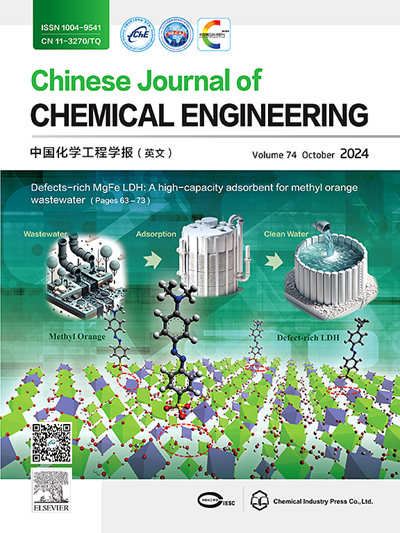Engineering stable multi-component pH responsive nanomedicine for enhanced photothermal/photodynamic therapy
IF 3.7
3区 工程技术
Q2 ENGINEERING, CHEMICAL
引用次数: 0
Abstract
Integrating multiple modalities of cancer therapies for synergistic and enhanced therapeutic efficacy remains challenging. Herein, flash nanoprecipitation (FNP), a kinetically driven process, was employed to expedite the coordination reaction time required for nano-encapsulate components with completely opposite physiochemical properties including sorafenib (SRF), hemoglobin (Hb), chlorin e6 (Ce6), and indocyanine green (ICG) into a multi-component HSCI nanomedicine. Hydrophilic components Hb and ICG interact to form hydrophobic ICG-Hb complexes under electrostatic and hydrophobic interactions. This process facilitates the characteristic time of nucleation (τnucleation) to match the characteristic mixing time (τmix) of the FNP process, resulting in the formulation of kinetically stable nanomedicine, overcoming the long equilibrium times and instability issues associated with thermodynamic assembly. Importantly, pH-responsive structure is also easily but effectively integrated in nanomedicine during this kinetically driven formulation to manipulate its structures. In the acidic tumor microenvironment (TME), the pH-stimulated morphology transformation of HSCI nanomedicine boosts its reactive oxygen species (ROS) generation efficiency and photothermal efficacy, endowing it with better antitumor suppression. In vitro and in vivo experiments reveal that the HSCI nanomedicine offers a synergistic therapeutic effect and stronger tumor suppression compared with single therapies. These results open a new window for developing strategies for multimodal combinatory cancer therapies.

工程稳定的多组分pH响应纳米药物增强光热/光动力治疗
整合多种方式的癌症治疗以协同和增强治疗效果仍然具有挑战性。本研究采用了一种动力学驱动的纳米闪速沉淀(FNP)方法,加快了索拉非尼(SRF)、血红蛋白(Hb)、氯胺e6 (Ce6)和吲哚菁绿(ICG)等理化性质完全相反的纳米包封组分在制备多组分HSCI纳米药物时所需的配位反应时间。亲水性组分Hb和ICG在静电和疏水作用下相互作用形成疏水的ICG-Hb配合物。这一过程使成核的特征时间(τ成核)与FNP过程的特征混合时间(τmix)相匹配,从而形成了动力学稳定的纳米药物,克服了与热力学组装相关的长平衡时间和不稳定性问题。重要的是,在这种动力学驱动的配方中,ph响应结构也很容易但有效地集成到纳米医学中,以操纵其结构。在酸性肿瘤微环境(TME)中,ph刺激下HSCI纳米药物的形态转化提高了其活性氧(ROS)生成效率和光热功效,具有较好的抗肿瘤抑制作用。体外和体内实验表明,与单一疗法相比,HSCI纳米药物具有协同治疗作用和更强的肿瘤抑制作用。这些结果为开发多模式联合癌症治疗策略打开了一扇新的窗口。
本文章由计算机程序翻译,如有差异,请以英文原文为准。
求助全文
约1分钟内获得全文
求助全文
来源期刊

Chinese Journal of Chemical Engineering
工程技术-工程:化工
CiteScore
6.60
自引率
5.30%
发文量
4309
审稿时长
31 days
期刊介绍:
The Chinese Journal of Chemical Engineering (Monthly, started in 1982) is the official journal of the Chemical Industry and Engineering Society of China and published by the Chemical Industry Press Co. Ltd. The aim of the journal is to develop the international exchange of scientific and technical information in the field of chemical engineering. It publishes original research papers that cover the major advancements and achievements in chemical engineering in China as well as some articles from overseas contributors.
The topics of journal include chemical engineering, chemical technology, biochemical engineering, energy and environmental engineering and other relevant fields. Papers are published on the basis of their relevance to theoretical research, practical application or potential uses in the industry as Research Papers, Communications, Reviews and Perspectives. Prominent domestic and overseas chemical experts and scholars have been invited to form an International Advisory Board and the Editorial Committee. It enjoys recognition among Chinese academia and industry as a reliable source of information of what is going on in chemical engineering research, both domestic and abroad.
 求助内容:
求助内容: 应助结果提醒方式:
应助结果提醒方式:


